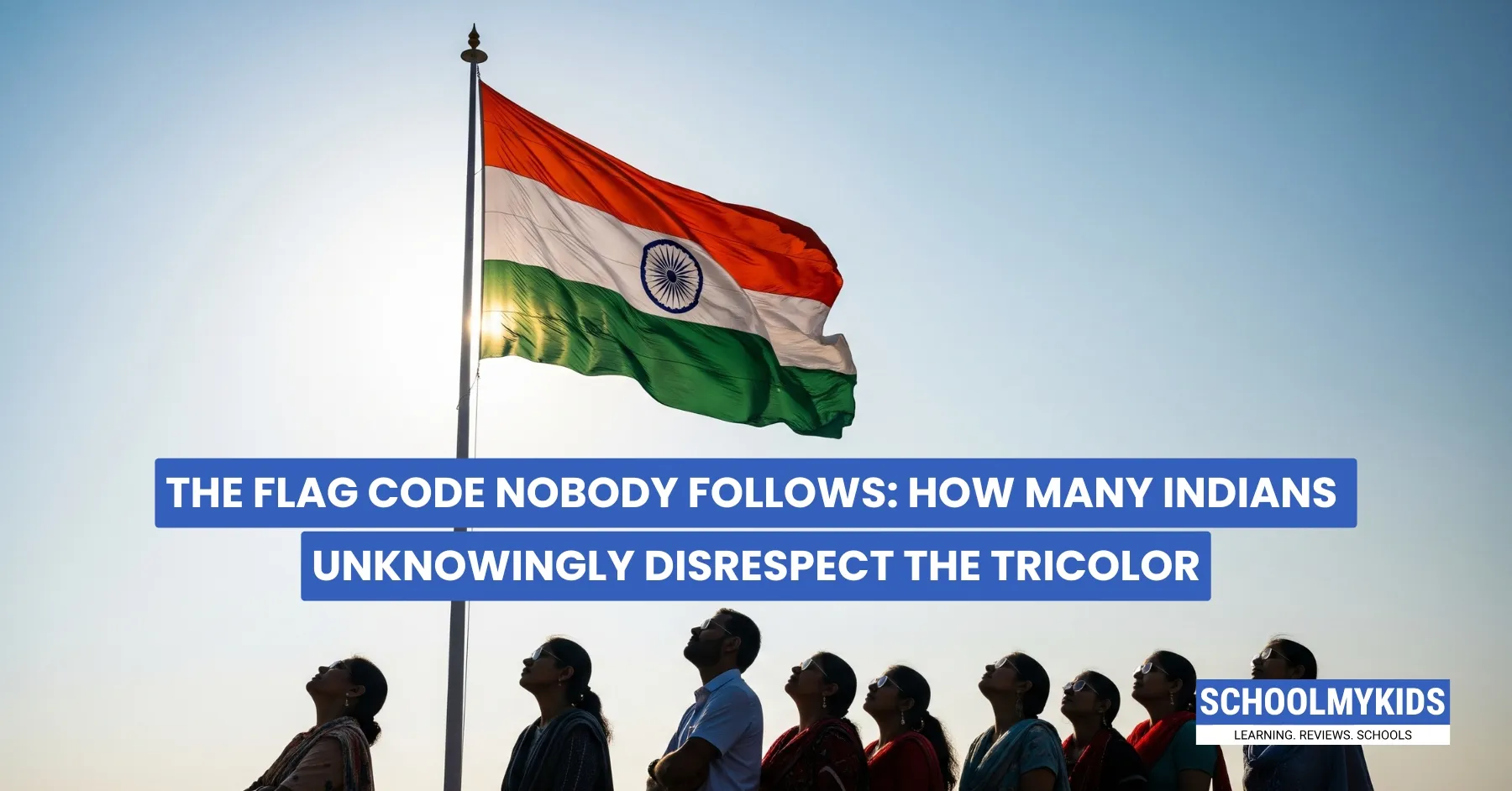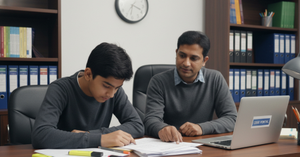It's August 15th morning. Your neighbor proudly puts up the Indian flag on their balcony. The kids in your society are running around with tiny flags, and everyone's feeling patriotic. But wait - is that flag touching the ground? Is it flying alongside another flag? Is it torn at the edges?
If you nodded yes to any of these, you've just witnessed what happens every Independence Day across India. We love our Tricolor, but most of us don't know how to respect it properly.
The Flag Code That Everyone Ignores
India has something called the Flag Code of India. Think of it as a rulebook for how to treat our national flag with respect. But here's the thing: hardly anyone knows these rules exist, let alone follows them.
As parents, we teach our kids to stand up during the national anthem and feel proud of their country. But shouldn't we also teach them how to handle the very symbol of that pride?
What Your Kids (And You) Should Know
Let us explore some simple rules that every Indian family should know:
- The flag should never touch the ground. This is probably the most broken rule during Independence Day celebrations. When your child is holding a flag, teach them to keep it up, never let it drag or fall.
- Don't fly a torn or dirty flag. That faded flag from last year? It's time to respectfully dispose of it. A damaged flag actually disrespects what it stands for.
- The flag has specific size rules. The length should always be 1.5 times the width (3:2 ratio). So if your flag is 20 cm wide, it should be 30 cm long.
- Our flag shouldn't share space. You can't fly the Indian flag alongside any other flag from the same pole. It needs its own space, just like the respect it deserves.
- Never use the flag as decoration. This means no flag tablecloths, no flag napkins, no flag caps or clothes. The flag isn't a design pattern - it's our national symbol.
- Don't draw or write on the flag. Those cute handprints kids make on paper flags for school? That's actually not allowed. The flag should stay as it is - saffron, white, green, and the Chakra.
- The flag should always be hoisted briskly and lowered slowly. Teach kids that when we put up the flag, we do it with energy and pride. When we take it down, we do it with care and respect.
- No flag on vehicles (for most people). Only very important people, like the President or Prime Minister, can have flags on their cars. Your family car shouldn't have a flag sticker or a flag attached to it.
- The flag should never be dipped to anyone or anything.
- Regular people can fly the flag anytime now. Earlier, we could only display flags on national holidays. But since 2002, you can fly it any day, as long as you do it with respect.
Teaching Kids the Right Way
Make it fun for your children. When you buy flags this Independence Day, have them check that they're the right size and quality. Show them how to hold it properly. Explain why we don't let it touch the ground: "Because it represents all of us, and we wouldn't want to be dragged in the dirt, right?"
Here's a simple game: Ask your kids to spot flag mistakes in your neighborhood. Is someone using a flag as a tablecloth? Is a flag touching the ground? Turn it into a learning moment, not a criticism session.
When they see others not following these rules, don't make them judge others harshly. Instead, say, "They love the flag too, they just don't know these rules. Maybe we can share what we learned."
For the little ones, teach them the "flag hug" - hold the flag close to your chest, never let it fall, and always keep it clean and neat.
For older kids, explain why these rules exist. The flag isn't just cloth; it's the symbol of our freedom, our democracy, and our unity.
The Real Spirit Behind the Rules
These aren't just random rules made by boring officials. Each rule has a reason. The flag represents every Indian, from the farmer in Punjab to the fisherman in Kerala. When we treat it carelessly, we're being careless with what connects us all.
The government wants us to display our flag more, but they also want us to do it right.
Simple Steps for This Independence Day
Here's what you can do with your family this August 15th:
- Check your flag before putting it up. Is it clean? Is it the right shape?
- Find a good spot where it won't get tangled or torn.
- If you're giving flags to kids, show them how to hold them properly first. Remind them: "No dragging, no throwing, no using it as a cape!"
- Teach kids the proper way to dispose of old flags - burn them respectfully in private, don't just throw them in the trash.
- When taking photos with the flag, make sure it's held properly and respectfully.
- When the day ends, store the flag carefully. Don't just stuff it in a drawer.
Remember: If you're putting up a flag at home, it should be the highest flag. No other flag or decoration should be above it.
Why This Matters More Than Ever
In a world where everything changes quickly, our flag remains constant. It's the same saffron, white, and green that our freedom fighters fought for. The same Ashoka Chakra that represents our values.
When we teach our kids to respect the flag properly, we're not just teaching rules. We're teaching them that some things are sacred, that symbols matter, and that being patriotic means being respectful too.
Conclusion
This Independence Day, let's make a promise. Let's be the generation that finally learns and follows the Flag Code. Let's teach our kids that loving your country isn't just about feeling good, it's about doing good, even in small ways.
Because when a child learns to hold the flag with care, they're learning to hold their country with care too. And that's a lesson worth passing on.
Our Tricolor deserves better than ignorance. It deserves our respect, our care, and our commitment to doing things right. This August 15th, let's give it exactly that.








Be the first one to comment on this story.